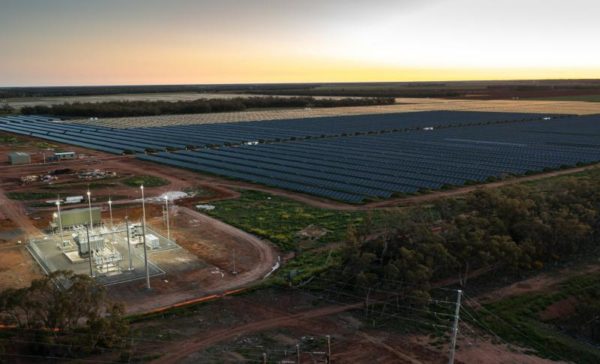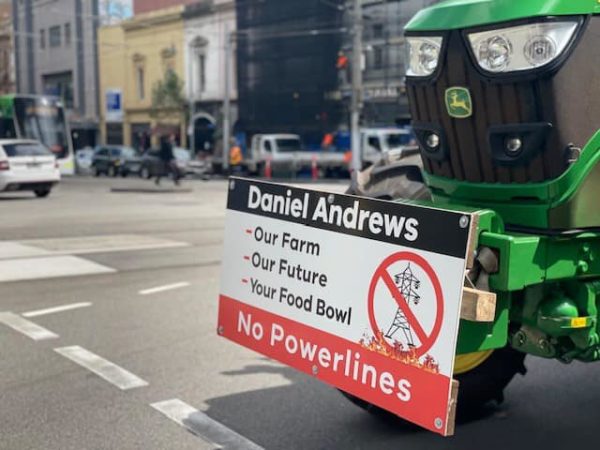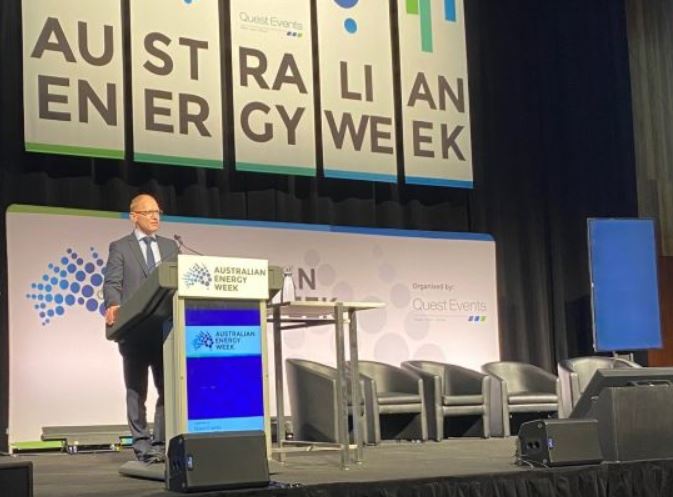Australian Energy Market Operator (AEMO) chief executive officer Daniel Westerman told a Melbourne audience this week that with Australia needing “a heck of a lot more” energy to meet future demands, firmed renewables are the best option to drive down energy costs and to hit economy-wide net-zero targets.
“We know through the work that’s gone into developing the Integrated System Plan (ISP), that firmed renewables will provide the most economic form of electricity generation moving forward,” Westerman told the audience at the Australian Energy Week conference in Melbourne on Tuesday.
“The ISP that we will formally release later this month will contain an updated roadmap to integrate greater levels of cheap, clean, renewable generation, and the right firming capacity into the NEM.
“The sooner the nation can integrate higher levels of firmed renewables into the energy system, the sooner we can electrify more of the economy and the sooner we can decouple energy costs from international factors, the sooner we can reduce stress on Australian homes and businesses.”
AEMO estimates that by 2050 the amount of energy delivered to customers in the National Electricity Market (NEM) will nearly double, up from 180TWh to about 330TWh per year as transport, heating, and industrial processes are electrified.
This energy will be delivered almost solely by renewables with large-scale wind and solar capacity projected to triple by 2030. The market operator’s latest ISP forecasts that utility-scale capacity will increase from 15GW currently to nearly 140GW by 2050 to meet demand as coal-fired generation withdraws.
Westerman is confident the generation requirements can be satisfied by renewables with an estimated 130GW of new large-scale wind, solar and storage projects in its current pipeline of potential connections.
“Of course, they won’t all come through, but you know, the ideas are there and the projects are there,” he said. “Right now, our National Connections team are managing grid connections for 189 new projects, mostly renewable generation and storage installations.

Image: Yurika
“In the past year, we connected 4GW in new renewable generation and storage projects. That’s up 40% on the previous year, and actually double the amount connected the year before. And if all goes to plan, at the end of the calendar year we’ll have connected nearly 5GW, so a 20% increase again.
“But 5GW per year is actually the minimum that we will need to connect every year for the remainder of the decade to replace the energy supplied by the retiring coal fleet.”
While investors continue to roll out new project proposals, Westerman said one major concern for the successful transition of Australia’s energy system to a renewables-dominated grid will be the delivery of sufficient firming capacity to ensure it remains functional.
“It is insufficient to have the energy there if it’s not there at the right time,” he said. “That firming capacity, including dispatchable storage, is absolutely critical and, to be frank, one of my worries is we’re not really seeing that investment in firming capacity in sufficient scale at the moment.”
AEMO estimates the grid will need a tripling of dispatchable firming capacity by 2050, from 20GW today to 60GW, which will come from a combination of technologies including big batteries, pumped hydro energy storage and demand response.
Westerman said the approvals process for transmission projects will also need an overhaul with new interconnectors needed to help alleviate network congestion and transport the electrons from areas of renewable generation to consumers.

Image: Kingston & District Power Alliance
“The approvals process for new transmission is a pain for everyone,” he said. “If you take the Western Victoria Transmission Network Project, the first transmission project in about 30 years, conceived to carry renewable energy from Western Victoria to Melbourne … we‘ve seen local communities upset that their concerns haven’t been heard during the RIT-T process.
“To build the transmission the whole industry and government must build the social licence with communities affected. And that needs a new approvals process that considers and evaluates their concerns at the start, not the end, of the process.
“For those of us in the energy industry, and I include AEMO here too, we all need to better sell the benefits of enabling the transition to a decarbonised energy future. It underpins the net-zero economy.”
Transgrid chief executive officer Brett Redman echoed Westerman’s transmission concerns, telling the audience “the policy initiatives we’re thinking about is how do we get on with it? How can we unlock the ability to build with confidence”.
“The more we can start to put in place more multi-year, five, six or seven-year programs rather than individual stages of projects, the more we can start to plan with suppliers and really lay out what is our build program, so they can get supply chains right and we can start to roll out in the most efficient manner we can,” he said.
“There is a lot of work ahead of us but transmission infrastructure is what will drive the transition to clean energy.”
This content is protected by copyright and may not be reused. If you want to cooperate with us and would like to reuse some of our content, please contact: editors@pv-magazine.com.









By submitting this form you agree to pv magazine using your data for the purposes of publishing your comment.
Your personal data will only be disclosed or otherwise transmitted to third parties for the purposes of spam filtering or if this is necessary for technical maintenance of the website. Any other transfer to third parties will not take place unless this is justified on the basis of applicable data protection regulations or if pv magazine is legally obliged to do so.
You may revoke this consent at any time with effect for the future, in which case your personal data will be deleted immediately. Otherwise, your data will be deleted if pv magazine has processed your request or the purpose of data storage is fulfilled.
Further information on data privacy can be found in our Data Protection Policy.